Bengaluru is often referred to as ‘The Garden City’. A pensioner’s paradise, Bengaluru was once a peaceful haven with perfect weather, where people came to build their retirement homes.
But the city has seen unprecedented growth and, just like the rest of India, cannot keep up. As a result, the city is exploding, becoming more unsafe for women, choking with traffic and pollution and has ever-increasing garbage problems.
However, there are always little pockets of people brimming with energy, excited about taking action and keen to create change. Jaaga is one such organisation that is attempting to combine art and activism to achieve a meaningful outcome. Jaaga is so many things, it’s quite hard to describe. In essence, it operates at the intersection of art, activism and technology.
Jaaga, which means ‘space’ in Kannada and ‘awaken’ in Hindi, was conceived in 2009 by artist Archana Prasad who was born and raised in Bengaluru and American technologist Freeman Murray. Before Jaaga, Archana was involved with the creation of ‘Samuha’, a collective of art practitioners, which involved facilitating an art space that would encourage contemporary artists to showcase their work. The biggest challenge she faced was finding an affordable space.
The city is exploding, becoming more unsafe for women, is choked with traffic and pollution and has ever-increasing garbage problems
Archana realised then that there was a lack of affordable creative community spaces and venues in the city where artists could exhibit their works without spending exorbitant amounts. “It (meeting Freeman) was really serendipitous and perfect,” says Archana. “We were about 25 artists and I thought surely there must be a way we can construct some sort of Lego structure that doesn’t require engineering skills.” When she met Freeman, he suggested pallet rack shelves for the structure. So this was the idea behind Jaaga and the structure was built almost overnight by a team of volunteers on a plot of land donated by architect Naresh Narasimhan.
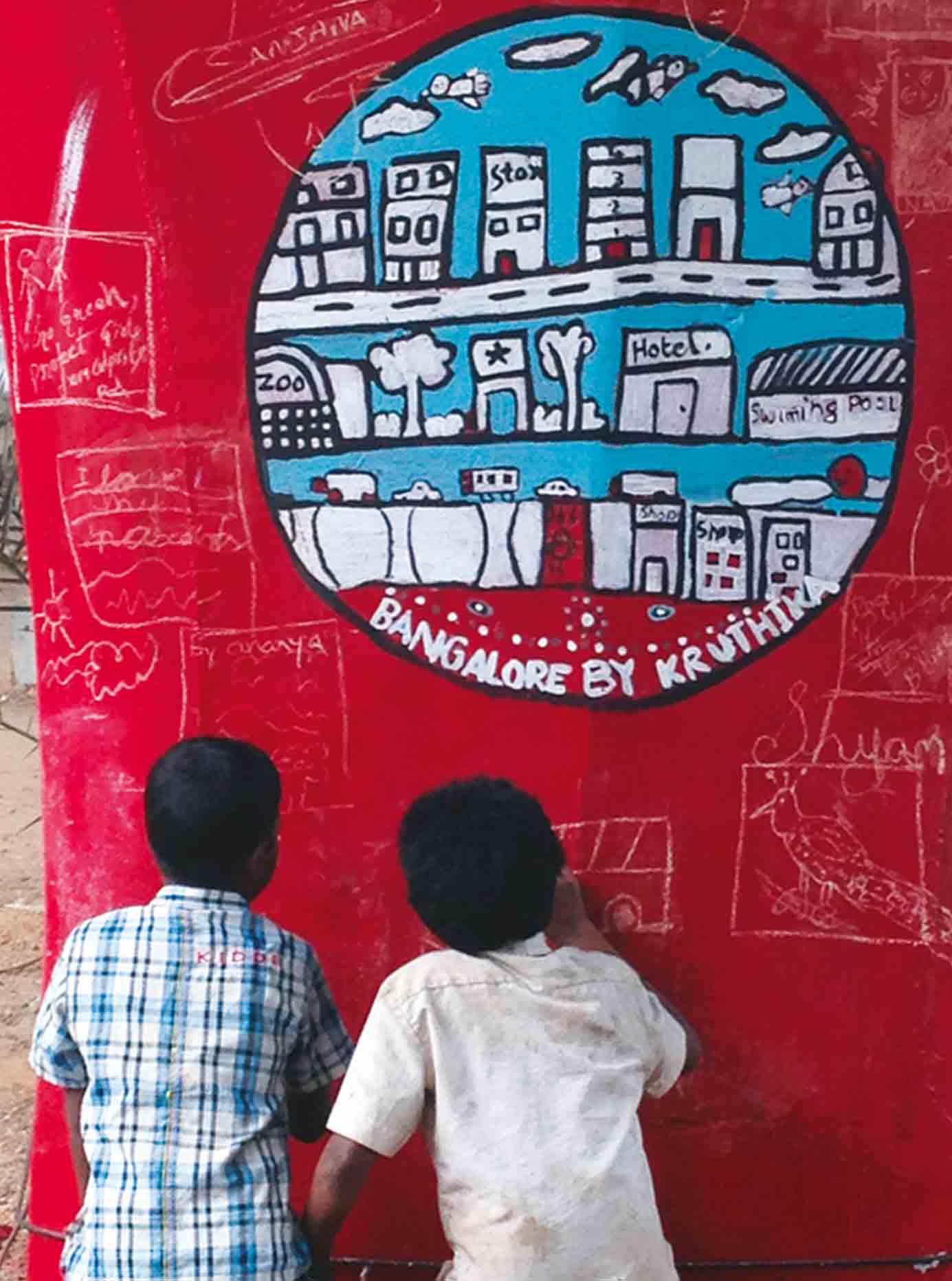 | 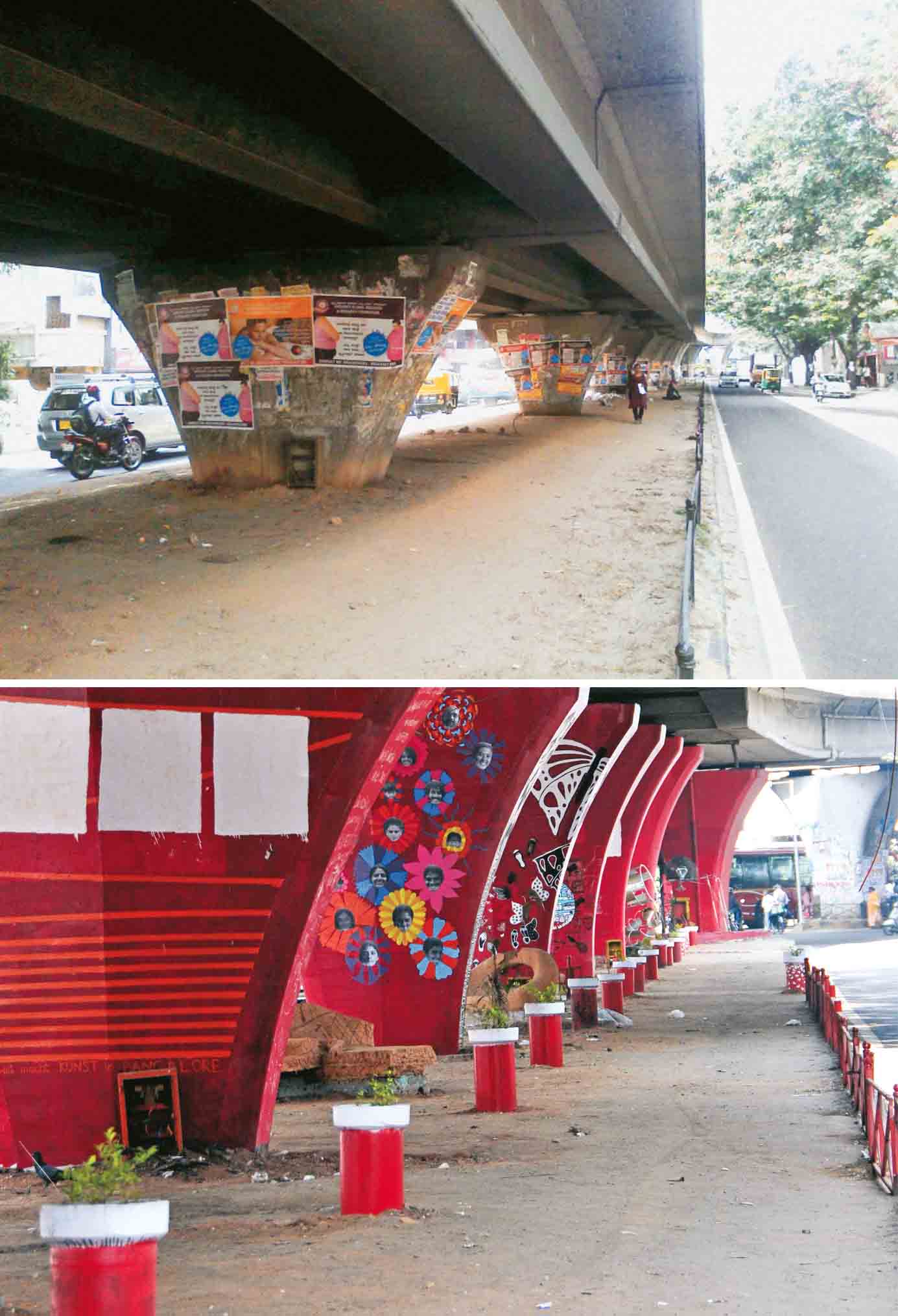 Bottom: Completed art |
Jaaga’s three core tracks are ‘Startup’, ‘Study’ and ‘DNA’. Startup supports creative entrepreneurs with space, networks and programmes and is located in the heart of Bengaluru. Study, located on a farm just outside Bengaluru, imparts programming skills to people and helps them become software developers. Jaaga DNA, short for Design+Networks+Arts, leads urban community initiatives that combine design, tech and art processes.
Jaaga’s community art seeks to solve urban issues through public art. Their most recent initiative, ILAKA, seeks to ‘create behavioural change in society towards safer, cleaner and culturally vibrant cities through art and design practices.’ ILAKA’s 2014 pilot project is called Investment Zone.
Investment Zone
The project was envisioned as a reality game, in which 10 artists in Gelsenkirchen, Germany, and 10 in Bengaluru, India, were asked to transform over the course of six months, portions of land which had completely different scenarios in their respective cities. The process of change between the shrinking city in Germany and the rapidly growing city in India could then be compared.
The main reason for this project is the obvious neglect. According to Archana, “As a city becomes bigger and space becomes more of a challenge, so much space is wasteful and so much can be done.” One way of utilising an abandoned space is the traditional approach of landscaping it, similar to a traffic island. This is not always sustainable, however. In her conversations with the BBMP, Bengaluru’s municipal corporation, Archana was told that maintaining plants at traffic islands was becoming a huge burden for the city. Thus arose the idea of transforming the space with public art. There was an element of curiosity involved as well: what would happen if a group of artists came and used a neglected space as their canvas?
There was a lack of affordable creative community spaces and venues in the city where artists could exhibit their works without spending exorbitant amounts
There were three plots offered to the artists. One was a private piece of land that was unused, another was a section of a space overlooking a public playground under a lovely tree and the third was the underside of the KH Double Road Flyover. The decision was unanimous and the artists chose the strip of space under the flyover, as it posed the most challenges. While the first two sites were far easier to work with, this was a space that had been strewn with garbage, had been uncontrollably vandalised and was used for urinating.
The idea was to convert this space into one that would serve as an aesthetic relief to our bustling cityscape; a space that a passer-by, a commuter in a bus and a person driving home from work would be able to pause and stare at, while waiting for the traffic signal to turn green. It was also to convert the space into one that could be easily maintained, that a vandal would find too aesthetically appealing to deface, and be a space whose art itself promotes messages of cleanliness and re-use. Over six months, the artists were to meet every two weeks, adding up to 12 ‘moves’. Every move concluded in an event, during which the public was invited to enjoy tea and samosas with the artists.
The Photobooth Move, for example, was conceived by urban designer Kamya Ramamchandran as a moment that people could take home. It comprised of a golden frame, placed next to painted images of Bollywood star Deepika Padukone throwing trash into a dustbin and Kannada actor Sudeep holding a broom. The event held after the move was one of the most successful. People were invited to have their pictures taken while they posed in the golden frame, which were printed immediately and handed over to them. There were a wide range of people who walked in, right from a slum dweller to a BMW owner. One man, a cleaner, was particularly memorable. He posed with his own broom and was thoroughly excited, because this was the space he was responsible for cleaning. His enthusiasm gave the artists a lot of satisfaction. Some took pictures with their families and some with groups of friends. There were about 100 photographs taken that evening!
During another event, video artist Rebana John responded to the notion of ‘what people miss in the city’. She made balls of fresh grass that responded to the sense of smell and touch, and projected a video of green fields in motion, viewed as though one was driving through them.
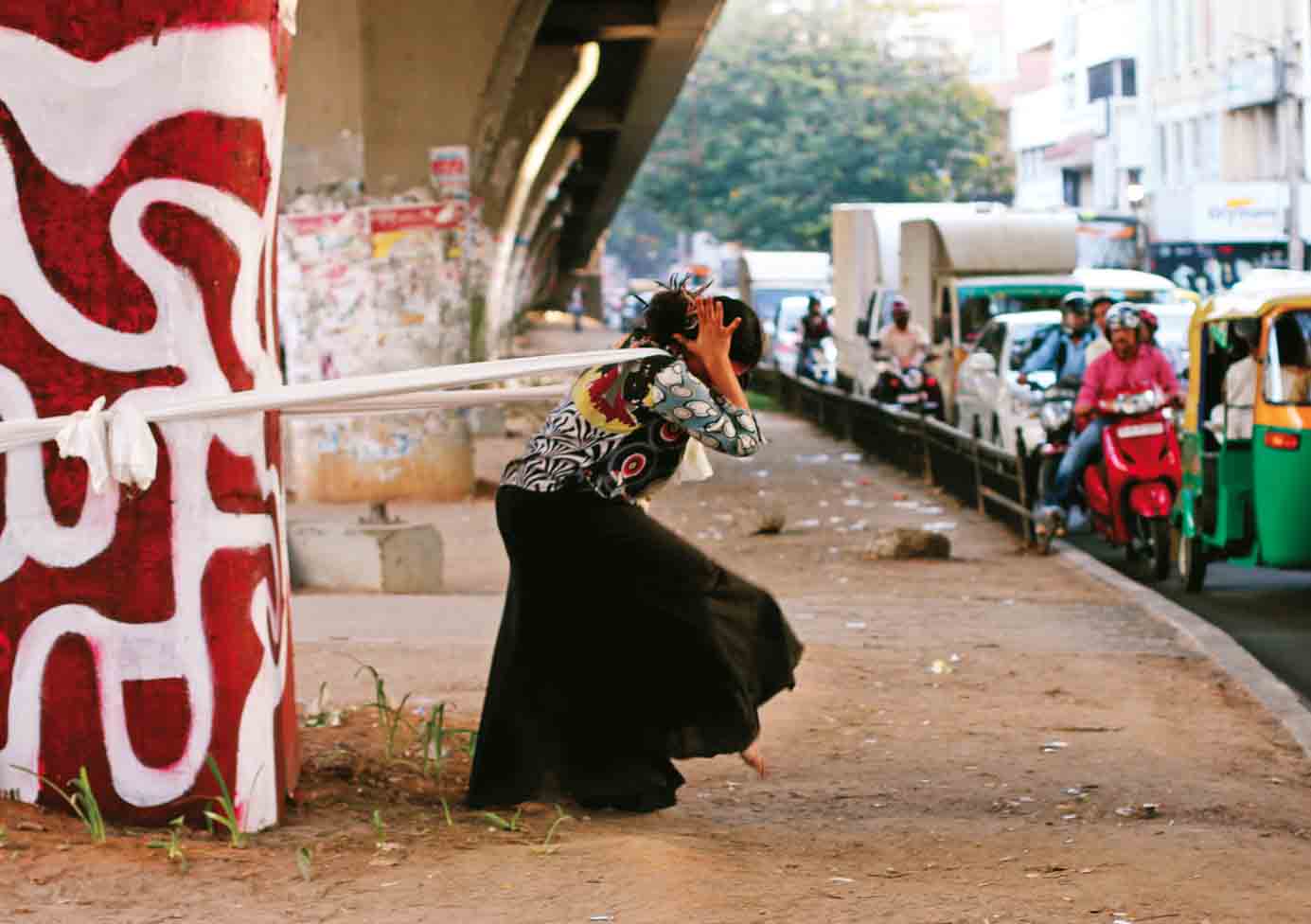
Performance artist Avril Stormy Unger would perform a contemporary dance at the end of every event. Her performances sparked tremendous curiosity from the public. During the last event, she performed at each column, tying all the 12 moves together, so that if one followed her from one column to the next, they would understand how the project unfolded.
During the process, the artists did face their share of challenges. Vivek Chockalingam, an installation artist recounted how some of his art went missing. He had found two broken toilets in a dump and had placed them on two pillars to give them some attention. He had then placed mirrors inside the toilets. The toilets disappeared in two days from the flyover, though nobody had touched them while they were in the garbage.
On another occasion, artist Jackson’s mud sculpture was found damaged and broken. Though disturbed to begin with, the artists have come to view this positively; they see it as curiosity or play, rather than an attempt to destroy. Even the cows rub themselves against the installations. “It was initially upsetting, but we had to come to terms with it and accept it. People are not used to public art and this is a way of exposing them to it. We are trying to change the way people look at a space,” says Vivek.
Bengaluru’s citizens may actually make a difference and not have to wait for the government to act
A little earlier on, when painters had been commissioned to paint the columns red, they were given specific instructions by the artists not to paint over the art that they had already painted. Despite this however, their art got covered with paint. That was something that depressed the group immensely, but they took it in their stride and started over, realising that this was all a part of it.
The response that the artists of Investment Zone received was overwhelming, right from the little things such as people gaping at them, constantly taking pictures and stopping by to ask questions, to safeguarding the art and making sure nobody damaged it. Jaaga received many calls commending them for their work.
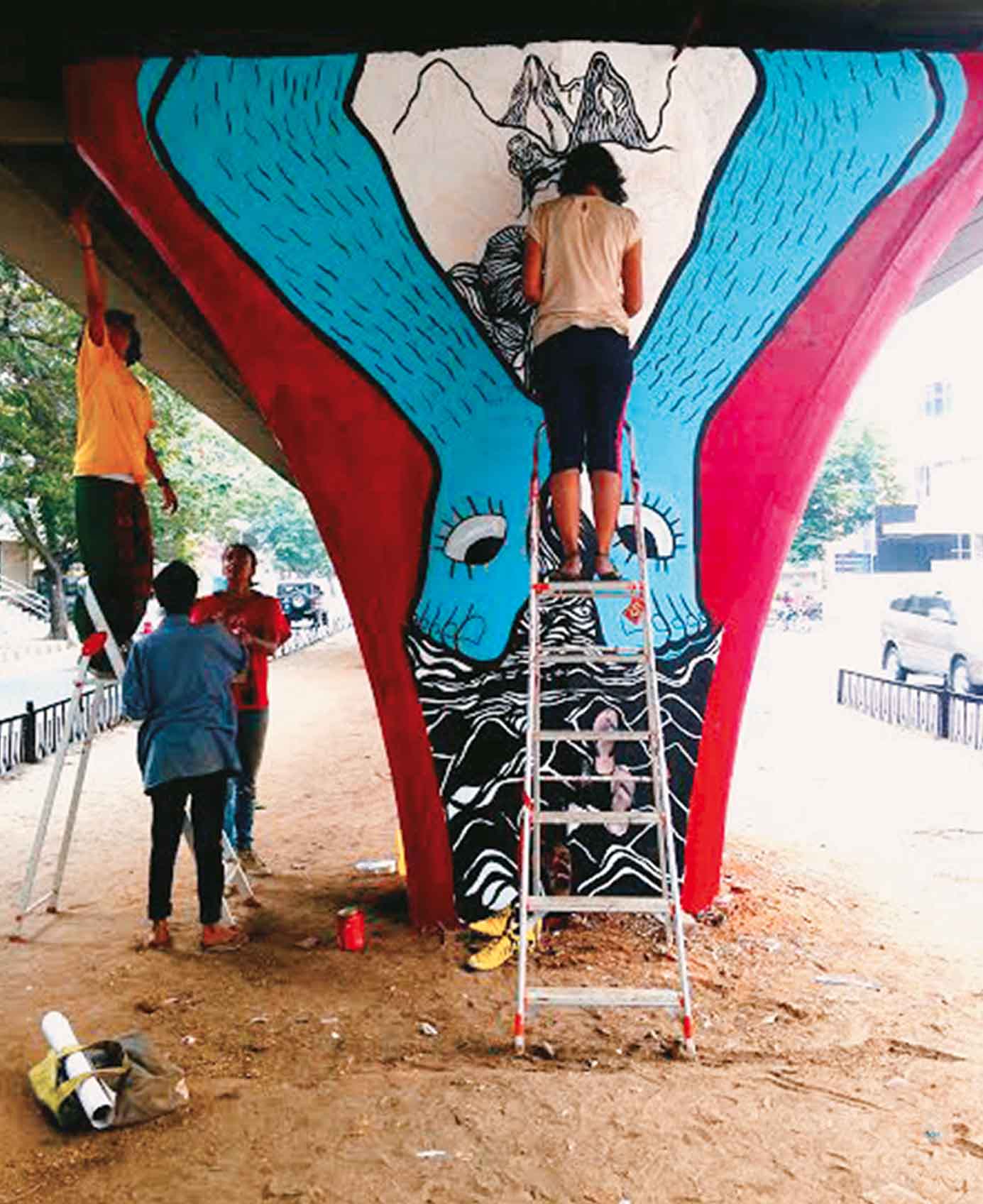
The artists had a lot of spontaneous help from the public. Passersby would come to help them carry materials. The watchman across the street would often help with anything they needed. “It was like giving him (the watchman) ownership of the installation. So if anything was happening to it, the watchman would stop people from damaging it or he would call us to tell us about it,” says Vivek. The artists found this very motivating.
The group sometimes created traffic jams; people would slow down and sometimes bump into each other. Children who wanted to draw on the columns were given chalk, which they used to draw colourful rangoli patterns on the sides of the columns.
A nearby restaurant offered to safeguard their supplies and materials so that the artists did not have to keep lugging them to the site, while a nearby lighting store supplied them with lights during their public events.
Apart from offering help in various ways, people began protecting the art, as though it were their own. A man was seen stopping his car on the street, walking up to a group of kids who were trying to put up posters on the artworks and preventing them from doing so.
Earlier in May, posters had been put up on some of the columns. Jaaga was bombarded with calls by people in the neighbourhood to inform them of what had happened. They contacted the group being advertised on the posters, who apologised to Jaaga and promised to take them down. Within a day, the posters had been removed.
Says Vivek, “The experience made me feel I could actually do something.” He realised that Bengaluru’s citizens may actually make a difference and not have to wait for the government to act. Vivek narrates how people would take pictures of the art, post them on Facebook and ask if anyone knew who the creators were. Somebody would then tag one of the artists on Facebook.
Investment Zone was concluded with an exhibition held at Jaaga, for which the private organisations that funded and supported Jaaga were invited, as well as government officials who had granted them permission and funding, all of whom had been exceedingly supportive of the project. The exhibition showcased the transformation of the flyover. The event was a grand success and the initiative was highly appreciated.
“It really was amazing! People realised the love the artists put into this project,” says Archana. The project in turn induced strong feelings in the artists, towards working with public space.
The project seems to be a grand success, which has served as a springboard for similar programmes. ILAKA is currently working on transforming a different section of the flyover in Richmond Town, Bengaluru. They now have an agreement with the government to reclaim five flyovers over five years.
All photos: Jaaga

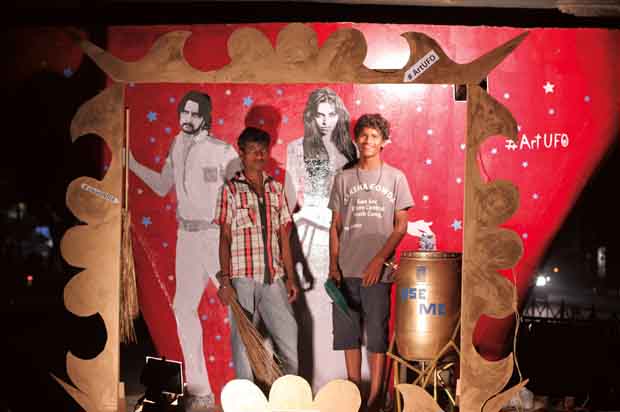

Comments (0)